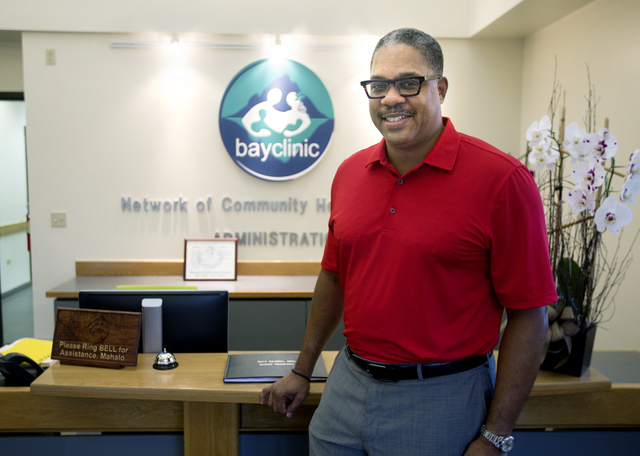The “sole (health care) safety net provider for 55 percent of Hawaii Island’s total population” has begun a transformation of its practice. ADVERTISING The “sole (health care) safety net provider for 55 percent of Hawaii Island’s total population” has begun
The “sole (health care) safety net provider for 55 percent of Hawaii Island’s total population” has begun a transformation of its practice.
It’s the creative vision of Bay Clinic CEO Harold Wallace.
He told the Tribune-Herald on Wednesday that the nonprofit organization’s Ka‘u location is the first built and owned by Bay Clinic, and the goal for the future is to build new locations based on patient need.
Previously, Bay Clinic chose locations that were open and then offered services at those locations based on available space, making it tough to fill holes in needed patient services.
But that is changing. Wallace said clinic plans include switching to all clinic-owned buildings and discontinuing its current focus on leasing space.
One specific goal for the future is an integrated approach to diabetes treatment. For example, patients with diabetes will be seen by ophthalmology, podiatry and endocrinology to treat the whole person and prevent terrible complications, such as amputations.
“We need the proper sites to really do that, and that’s the direction we’re going,” Wallace said.
Alan Okinaka, chair of the Bay Clinic board, believes health care is a basic human right.
A person who is healthy, he said, will go to work on time, be productive and have the ability to interact well as a parent or family member. To help promote more widespread access to health care, Bay Clinic is striving to provide better quality of care, documented with real-world data, at lower cost.
One frustration for patients nationwide is waiting for an automated telephone service when calling to set up a simple appointment or check on a lab result.
To allay those concerns, Bay Clinic recently opened a call center. Patients reach a real person, or they get a call back directly from one of several Bay Clinic call-center staffers.
Bay Clinic serves primarily uninsured and under-insured patients on a sliding-fee scale and emphasizes that patients are served “regardless of ability to pay.”
The National Association of Free and Charitable Clinics says online that such clinics serve “as a safety net for those who have fallen through the cracks of America’s health care system — and studies have shown that they have also decreased the burden on the nation’s emergency rooms.”
Health care access alone isn’t sufficient, Wallace said.
Rather, it’s essential to consider the population’s overall health and “look at it comprehensively.”
That means increasing the availability of high-quality, affordable housing in the Hilo region; increasing flights to and from the Hilo International Airport; making jobs outside of health care available so physician spouses can find enjoyable employment; improving schools and increasing entertainment options for families.
If that comprehensive approach isn’t taken, Wallace said, “we will always be in the scramble-zone of trying to improve our services.”
Wallace hopes his vision for the clinic’s future, which is backed by the clinic’s board, becomes increasingly apparent to patients.
“We are clearly on the way to improving the organization,” Wallace said.
He wants patients to know their voices are being heard.
“We want folks to know this is a new Bay Clinic — and we really are paying attention,” he said.



